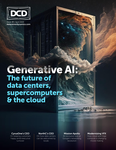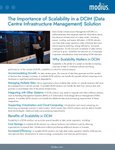As demands for cloud computing increase and revolutionary apps like ChatGPT gain momentum and showcase the power of AI, CIOs face increased pressure to innovate at breakneck speed just to keep pace with competitors.
The computing power and human effort needed to quickly develop and deliver new applications is enormous and while there is no slowdown in data center development to support this influx of innovation, more than 150,000 workers, nearly 130,000 workers in US-based tech companies have been laid off, leaving a gaping hole in the workforce. No one is feeling the crunch more than those responsible for running efficient and productive data centers.
In fact, according to Uptime Institute’s recent Global Data Center survey, 54 percent of respondents cited staffing and organization as the data center’s biggest management and operations need. This growing pressure is further magnified by another mounting challenge—heightened customer requirements and cutover dates.
So how do data center professionals scale already lean operations efficiently at the speed required to compete in today’s economy? Here are best practices to maximize productivity, increase efficiencies, and deliver better business outcomes across the data center despite mounting challenges.
Start from scratch: make sure the basics are done right
It is essential to ensure the basics are implemented correctly before considering how to integrate additional tech solutions designed to increase efficiencies and maximize labor. Common examples include:
- Physical layer Structured Cabling Systems (SCS) - Often, these are not implemented by data center operators, leading to poor flexibility in the cable plant, weakened operational management in troubleshooting outages, and delays in implementing new networking standards.
- Bonding and grounding - When inadequate and improperly implemented, organizations run the risk of impacting sensitive IT equipment. The Emerald Book, NEC, and TIA 607 are the foundation for an effective grounding system.
Leverage a centralized management suite to monitor all data points
Unfortunately, this is a best practice many data centers ignore. A lack of system monitoring leads to gaps in assessing where the data center is losing efficiency. This is especially relevant when it comes to energy optimization. Monitoring data center energy utilization helps uncover areas for improvement and empowers organizations with keen insights to make data-driven decisions about where to focus their energy optimization efforts.
By monitoring energy consumption regularly, data center operators can identify trends and patterns in energy usage, like peak usage times or spikes in energy consumption. This data helps organizations identify and implement energy-saving measures.
Mitigate risk through strategic alignment
One of the most effective ways to mitigate risk is to create a central point within management to align all the contractors, integrators, installers, sub-contractors, etc. working in the data center. Supply chain solutions and services such as pre-ordering, pre-assembly, and invoicing are essential to help streamline daily operations routines, boost productivity and ensure efficiency across the data center.
Partner with solution providers that provide end-to-end services
From cloud offerings, design and construction advisory exercises, collaboration platforms, and storage solutions and tools— partnering with the right solution provider can help alleviate many of the challenges facing data center operators today and lay the groundwork for long-term success. The right partner can help analyze data to expose inefficiencies, manage risk by creating strategic alignment of the labor support and administrative needs of the data center, and identify and address inefficiencies. The operational gains achieved from addressing the process with innovative end-to-end services and solutions will not only lead to better business outcomes, but also save money and give your data center a competitive advantage.
Given the rapid pace of innovation, the industry will continue to feel the pressure of limited labor resources, increased demand for cloud computing, and heightened customer expectations. Taking the time to evaluate opportunities for improvement across the data center will result in significant cost and productivity gains. Those forward-thinking organizations that empower data center operators with the strategic technology and services needed to automate time-consuming processes, streamline operations, and augment hard-working labor resources will effectively emerge as leaders.





